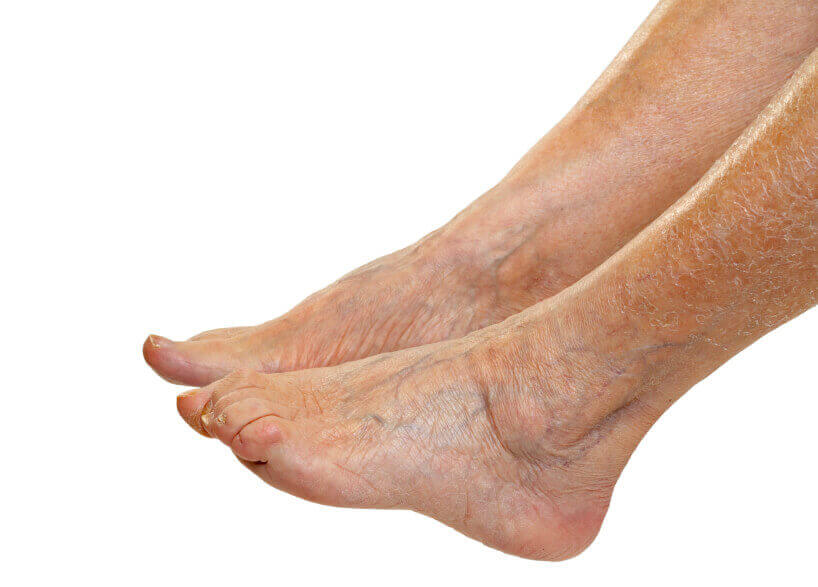Stasis or Varicose Eczema Treatment
Eczema-Ltd III is an ideal treatment for stasis eczema first aimed at controlling the skin surface changes but secondly (and of great importance) at controlling the underlying stasis. Stasis may require wearing surgical support stockings to give support to the underlying blood vessels. Sometimes the vessels need specialist assessment and surgical treatment.
To reduce the swelling in the legs:
- Don't stand for long periods.
- Take regular walks.
- Elevate your feet when sitting: if your legs are swollen, they need to be above your hips to drain effectively.
- Elevate the foot of your bed at night.
Symptoms of Stasis Eczema

Stasis eczema is a form of dermatitis that commonly affects individuals who are 50 years of age and older. It develops as a result of poor circulation in the feet and ankles, which can cause excess fluid accumulation and, in turn, the skin becomes dry, red, scaly, itchy, and irritated, which is characteristic of stasis eczema. Repeated picking and scratching of the affected area can cause it to ooze, crust, or become thickened. Individuals who have heart failure, varicose veins, or who have had recent trauma may be at greater risk for developing stasis eczema.
Causes of Stasis Eczema
Stasis eczema is a condition of the skin around the ankles and lower legs, which arises as a result of a tendency for varicose veins or ankle swelling which is often called "stasis". Stasis eczema is a rash of the lower legs, which is due to poor return of blood to the heart. Usually the inner lower leg is more involved than the outer lower leg. In the early stages the main changes are orange-brown discoloration of the skin. Later the skin surface becomes scaly, itchy, and develops other features of eczema. Weeping and infection are common in later stages.
Stasis eczema appears below the knee or lower leg and ankles, and is also referred to as 'varicose eczema' due to poor blood circulation. Often the leg become swollen and especially noticeable is swollen ankles which can also be itchy, speckled and some cracking of the skin can occur. Try not to stand for long periods of time. Yet try moderate walking, swimming or any moderate movement that can be enjoyable such as gardening or yard work.
